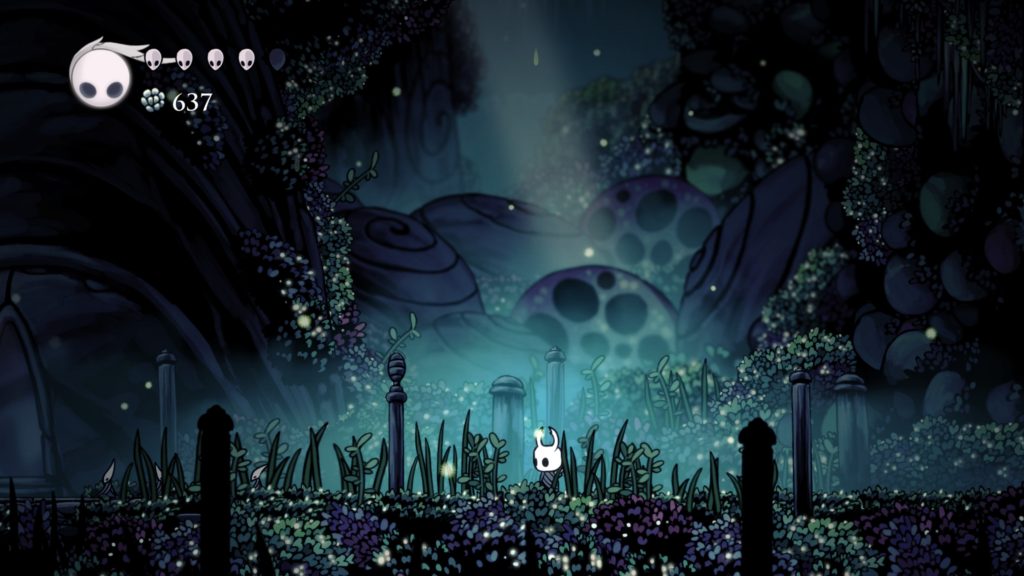More Info from Thomas Happ Games
- Genre: Metroidvania
- Platform: Switch
- Also Available On: PS4, Windows, macOS, Linux, Vita, Wii U, Xbox One
TL;DR
- Solid core combat mechanics with a great range of weapons
- Visuals nail the retro look without feeling unnecessarily simple
- Traversal mechanics (or lack thereof) end up becoming a big problem as the game goes on
Axiom Verge is a bit of a tough one to crack. From a visual and combat mechanics standpoint, this is obviously a Metroid-inspired game, and in a lot of ways ends up surpassing what was done in those days. The variety of weapons in particular is a real high point. However, the game starts to drag as it goes on due to a lack of some traversal and map features that I’d consider standard in the genre, leading less to artificial difficulty and more to artificial time padding. While the game is ultimately pretty good, those things that were missing were pretty damaging to my overall feel for the game.
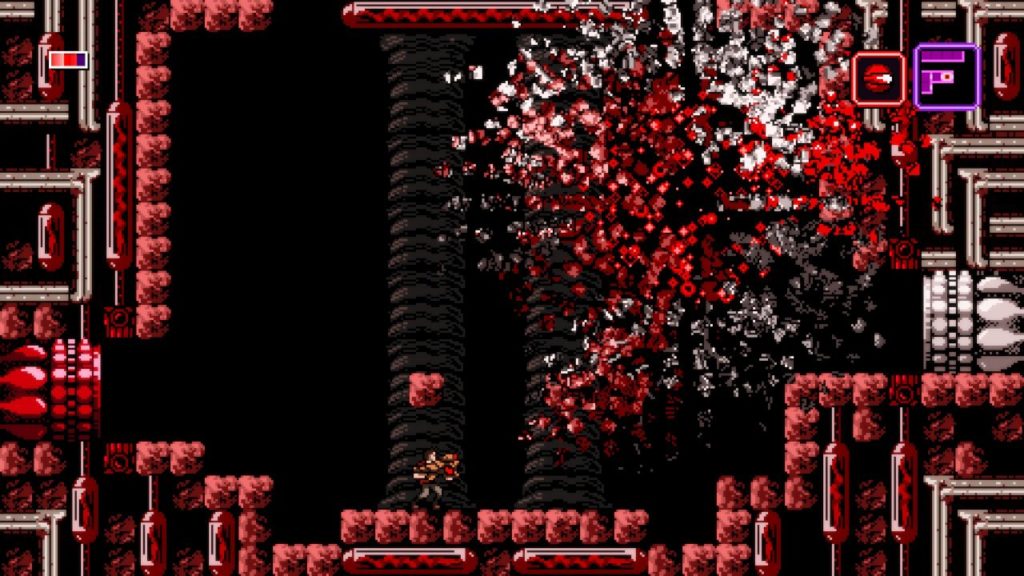
I generally don’t try to hide the fact that I enjoy Metroidvania games, so chalk this one up to another game I should have played a long time ago. Coming into this, the main thing that I’d seen in the past about it were the visuals, and we’ll start there. This is very obviously patterned more after the 8-bit style of the original Metroid, though in practice it ends up falling somewhere between the NES and SNES in overall visual style. However, the care put into the visuals of the game elevate it above a lot of other similarly retro-inspired games.
It’s often the little details that can be pulled off in modern hardware that end up being the most impressive. Bosses explode into pixel bits, covering the entire screen. Warping effects give obvious hints that things are going very wrong, as well as hints that this game isn’t exactly 8-bit. Enemy animations are simple, but very fluid throughout. Weapon firing across a wide range of weapons all have unique effects that very plainly tell the player how a weapon works and where it will be most effective. Overall, the game just looks damn good, even if it doesn’t look modern.
On the weapon front, things also continue to impress. Rather than Metroid’s slim selection, Axiom Verge comes with a wide range of weapons that can be selected from at any time. These range from your simple orb weapons to lock-on lightning beams to bouncing orbs to flails. This is combined with a default radial selection menu that can be hopped in and out of with great speed to allow the player to quickly and effectively switch their weapon to take advantage of their current enemy’s weakness. This is in effect the best part of the game where combat is no longer just run and gun, but often has wildly changing tactics even on a room to room basis.
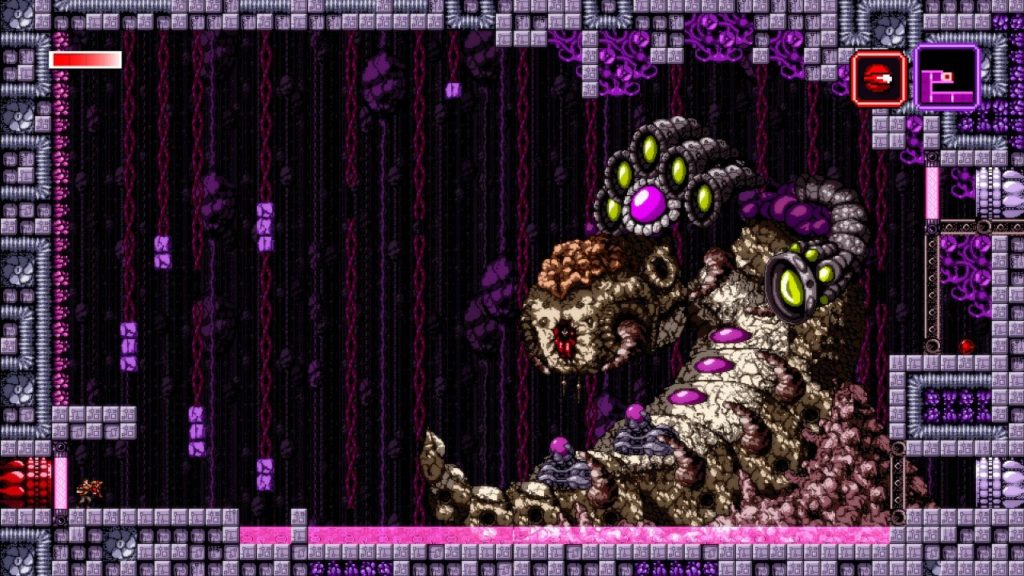
I’ll be the first to admit that in my head the problems I have with the game generally feel like “old man complains about missing features”. That being said, I’ve moved on from games that came out 30 years ago. Padding time via artificial difficulty or re-traversal doesn’t feel nostalgic, it feels old. That’s where things started to fall apart for me in this game.
However, despite bosses being visually impressive in scale they also start to show the first sign of weakness in the game. Generally speaking each boss has one mechanic to worry about, and they fairly universally involve some sort of jumping mechanic. For example, the boss above involves hiding behind the purple walls that block shots, then peaking out and shooting the boss from range. A later boss involved an annoying sequence of pseudo-random projectiles that had to be avoided via teleporting. The long and short of it is that the bosses are visually cool, but ultimately pretty simple. Despite the typical pattern recognition of the genre, these just don’t live up to your Ridley or Kraid fights.
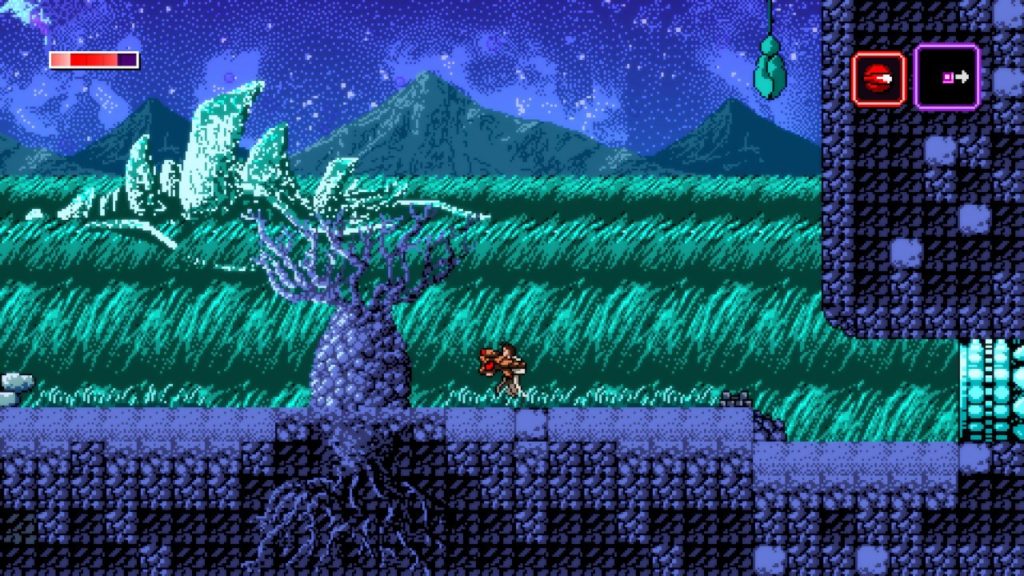
This weakness is then exacerbated by some of the choices made in traversal mechanics. The singular main issue for me in this entire game is that there is no fast travel, and this causes a cascade of issues. As your character’s power curve advances, it just becomes a time waste to fight enemies in areas you had been to. You know their pattern, they die quicker, they pose no danger, but you have to run through or past them.
Generally speaking, the lack of objective markers wouldn’t be a problem in this genre, but the lack of fast travel made the end of the game a chore. By the end, I was basically doing circles around the game world to find the one spot that I could enter with a new tool, getting another new tool, then finding the next one spot I could now enter. If a spot I hadn’t been able to get to was still closed I moved on. There wasn’t much fun here, it just became the pattern that had to be done.
The real final problem was an expectation of how the map worked based on other games. Typical Metroidvanias at least give some notification if there is a hidden pickup in a general area, leaving it to the player to puzzle out how to find it. In Axiom Verge there is simultaneously no indicators and in a lot of places, no real in-world clue that there are hidden things either. I found a not insignificant amount of treasure in the late game by accidentally teleporting too far and ending up in a wall that looked in no way passable or breakable. For a genre built around exploration, those two things combined to just make the loot pattern feel really awkward compared to the norm.
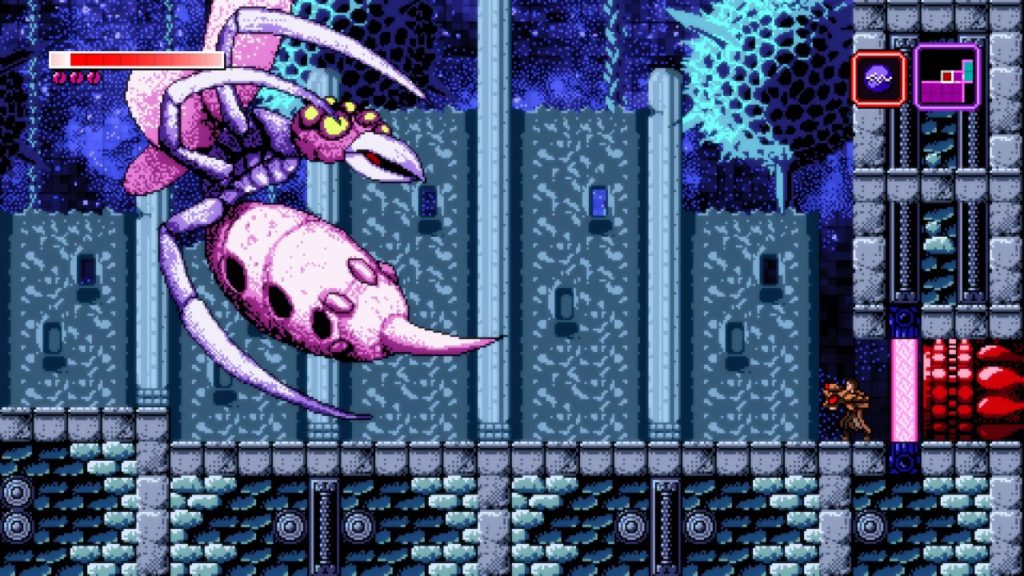
So I suppose the question becomes, is this worth playing? I would say yes, with the caveat being that you probably want more patience for very old missing mechanics than I generally have. From a core fundamentals standpoint, this is a perfectly solid Metroidvania title. The variety of weapons does a lot to push the player to explore and find new combat situations, and honestly does a lot to allow me to ignore the very real problems the game has around traversal. However, if some of the problems I listed above sound like deal breakers, I’m probably fairly close to in agreement with you that this one is skippable. However, it may be worth a look even with the knowledge that it may just get shelved.



